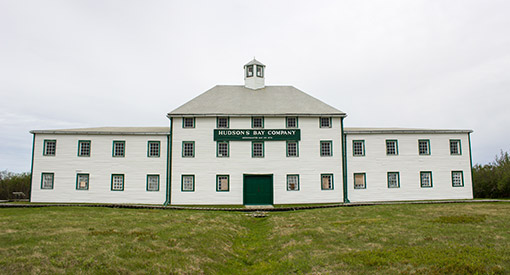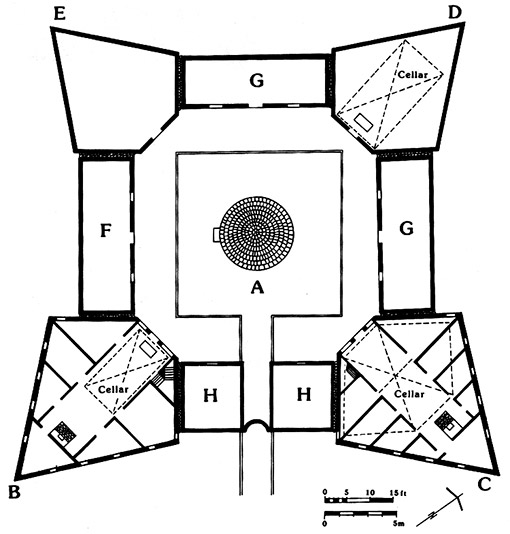Archaeology
York Factory National Historic Site

The secret of the York Factory Depot
The octagon in the frost
Major archeological work is being done at the most important building of York Factory National Historic Site, located on the shore of the Hudson's Bay. The Hudson's Bay Company Depot on the site was built between 1831 and 1838 and is the oldest and largest wooden building in Canada standing on permanently frozen ground known as permafrost. The building is important to Canadian history. The artifacts and building remains tell about the lives of the Hudson's Bay Company employees living and working at York Factory in the late 18th and early 19th centuries. The long-term conservation and management strategy for the Depot developed by Parks Canada includes structural stabilization and repairs. Archeological excavations began in 1991 to record those building remains buried in the permafrost and to rescue artifacts that would be damaged by building repairs.

The octagon revealed
Everything the soil contained was heaved upward by the permafrost. In 1991, Parks Canada archeologists working between the floor joists inside the Depot found well preserved remains of the "Old Octagon", constructed between 1788 and 1795 in the same spot where the Depot now stands. In 1992, more Octagon remains were found in insulation and drainage trenches excavated outside the Depot.
The Octagon was a star-shaped fort (Figure 2). It had four five-sided structures called flankers at each corner. Between each of these were rectangular rooms called curtain sheds. These forts could be defended by shooting from the flankers, along the outside walls of the curtain sheds. The Octagon was entered only through the main gate and each flanker and curtain were reached only from the courtyard.
By 1831, after being used for only 35 years, the Octagon had to be replaced. Its weakness was its rigid stone and brick foundation and the solid wood and brick walls. This kind of building works well in the British climate, but was not flexible enough for the heaving and pressure of the Canadian permafrost. Both the foundations and the building quickly fell apart and could no longer be used.
Artifacts found
The artifacts found with the Octagon are interesting because of where they were found and what they are. The artifacts were recovered from black, organic soil exposed in the insulation trenches outside the Depot and in excavations under the floors. The organic soil is made from historic garbage casually thrown around the walls of the Octagon, probably from the windows.
Octagon remains
Archaeologists were surprised to find well preserved Octagon remains even though the building was demolished in 1831. The structure was also disturbed from subsequent Depot construction and repairs as well as relentless frost-heave. These Octagon remains include cellars under all four flankers (only three were shown in the 1786 plan), footing remnants of the officers' and men's flankers, a fireplace or chimney foundation, curtain shed foundations, footings and a possible oven from the 1810 cookroom, and a thick refuse deposit encircling the perimeter of the Octagon.
Related links
- Date modified :